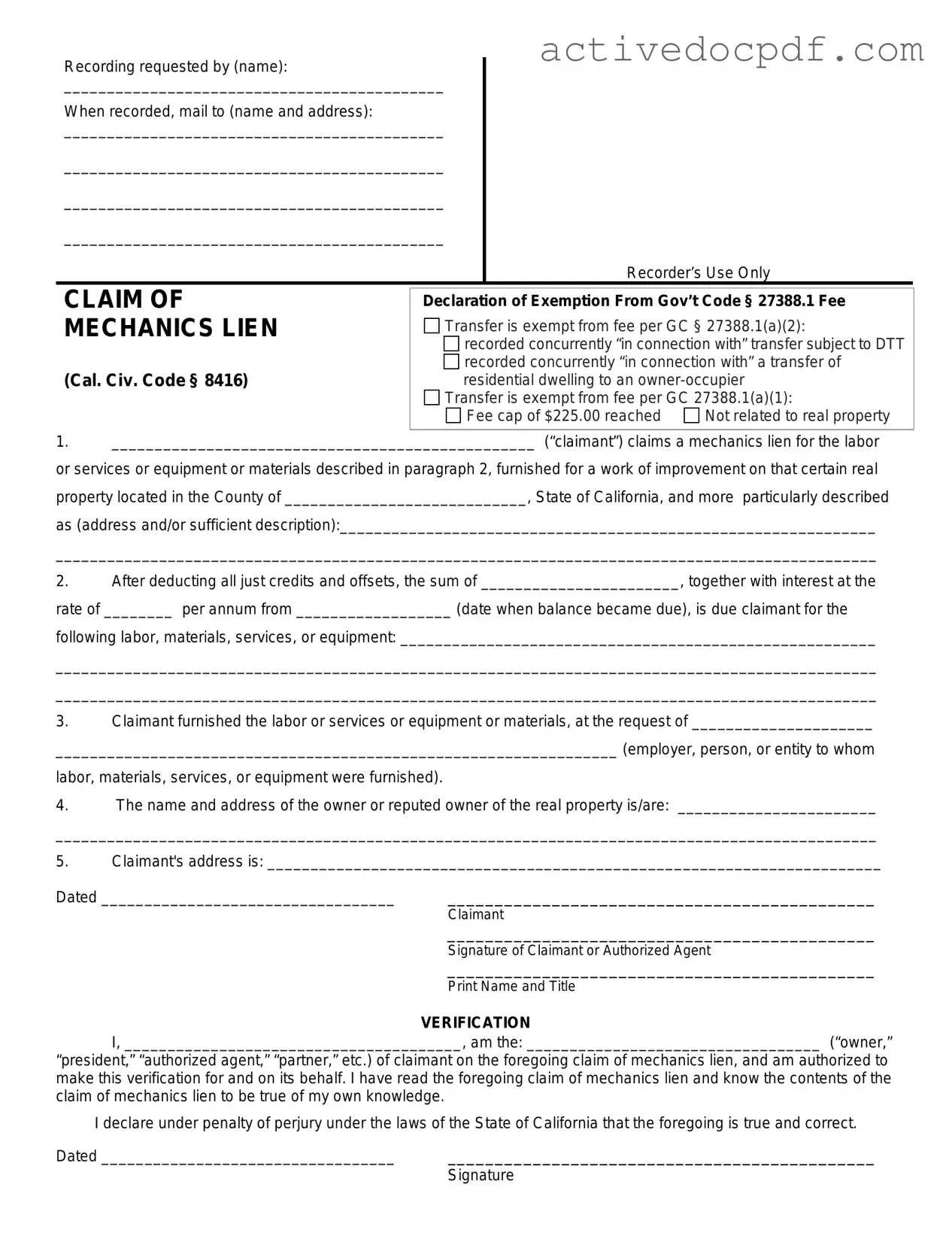What is a Mechanics Lien in California?
A Mechanics Lien is a legal claim against a property that ensures payment for labor, materials, or services provided during construction or improvement of that property. In California, it protects contractors, subcontractors, and suppliers when they do not receive payment for their work.
Who can file a Mechanics Lien in California?
Various parties can file a Mechanics Lien, including:
-
General contractors
-
Subcontractors
-
Material suppliers
-
Laborers
Essentially, anyone who has contributed to the construction or improvement of a property may be eligible to file a lien if they have not been paid.
What is the process for filing a Mechanics Lien?
The process generally involves the following steps:
-
Determine eligibility: Ensure you are entitled to file a lien based on your work or materials provided.
-
Prepare the lien: Complete the Mechanics Lien form accurately, including details about the property, the work done, and the amount owed.
-
File the lien: Submit the completed form to the county recorder's office where the property is located.
-
Serve notice: Notify the property owner and other relevant parties about the filed lien.
The Mechanics Lien form must include the following information:
-
Name and address of the claimant (the person filing the lien)
-
Name and address of the property owner
-
Description of the property
-
Details of the work performed or materials supplied
-
Amount owed for the services or materials
-
Date of completion of work
Are there deadlines for filing a Mechanics Lien?
Yes, there are specific deadlines. Generally, a Mechanics Lien must be filed within 90 days of the completion of the work. If a notice of completion is recorded, the deadline shortens to 60 days. It is crucial to adhere to these timelines to ensure your lien is valid.
What happens after a Mechanics Lien is filed?
Once a Mechanics Lien is filed, the property owner is notified. The owner may choose to pay the outstanding amount to clear the lien. If the issue remains unresolved, the claimant may need to initiate legal proceedings to enforce the lien. This could lead to a foreclosure action if payment is still not received.
Can a Mechanics Lien be removed?
Yes, a Mechanics Lien can be removed. The property owner may pay the amount owed, which would typically result in the lien being released. Alternatively, the claimant can voluntarily remove the lien by filing a withdrawal form with the county recorder's office.
What are the consequences of not filing a Mechanics Lien?
If you do not file a Mechanics Lien, you may lose your right to collect payment for your work or materials. Without this legal claim, you may have limited options for recovering the owed amount. Filing a lien is a crucial step in protecting your financial interests in construction projects.
Is legal assistance necessary to file a Mechanics Lien?
While it is possible to file a Mechanics Lien without legal assistance, it is often advisable to consult with a professional. A legal expert can help ensure that the lien is filed correctly and that all necessary steps are followed, reducing the risk of errors that could invalidate the claim.
